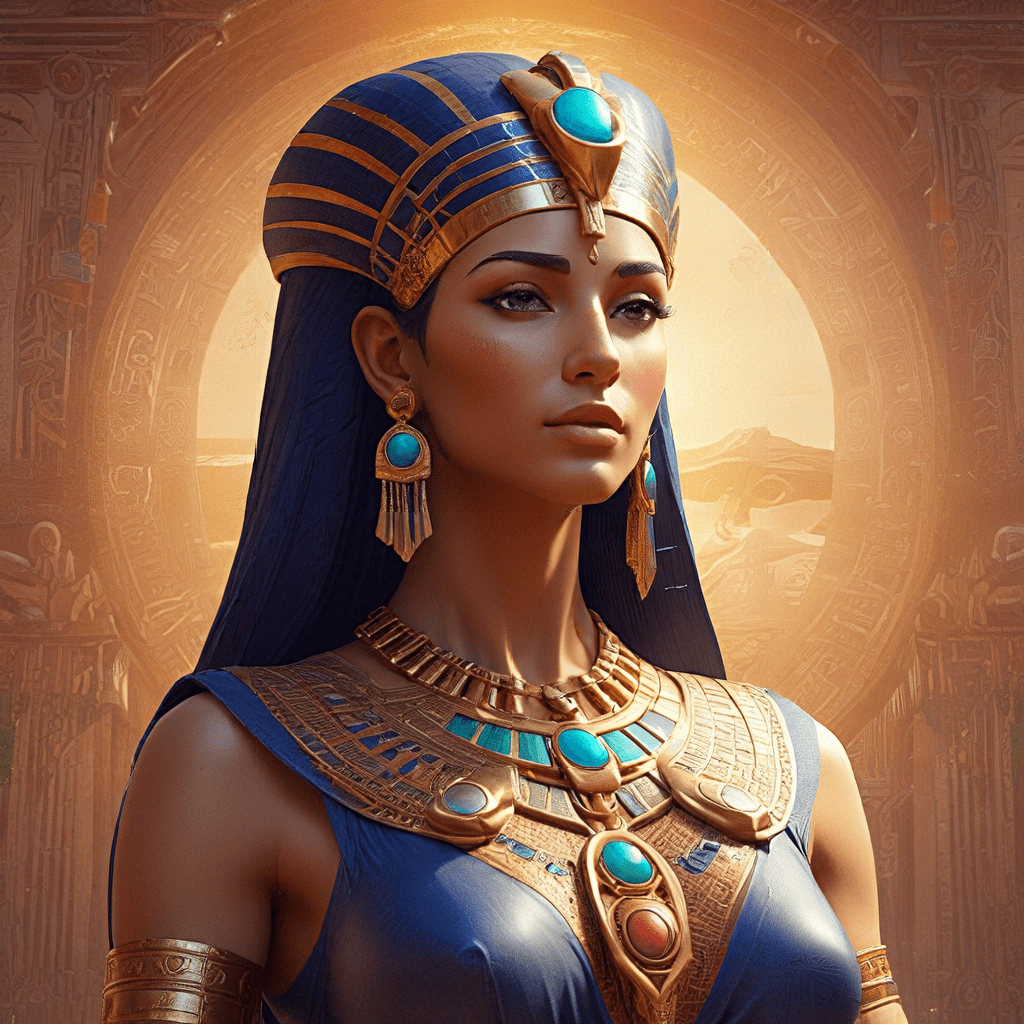Hathor: The Goddess of the Soul
1. Introduction: The multifaceted Hathor
In the vast tapestry of ancient Egyptian mythology, Hathor stands as a radiant and complex figure—a goddess whose influence spans the realms of love, joy, beauty, music, motherhood, and even the afterlife. Her presence graces the ancient temples, art, and literature of Egypt, offering a glimpse into the rich spiritual beliefs of this ancient civilization.
Hathor’s multifaceted nature makes her a captivating figure. She is the embodiment of feminine beauty, love, and passion. She is also a nurturing mother figure, a protector of children, and a symbol of fertility. Her connection to music, dance, and celebration is profound, and she played a vital role in guiding and protecting souls in the afterlife.
2. Origins and Symbolism
Hathor’s origins are deeply intertwined with other powerful goddesses in Egyptian mythology. Some scholars believe she emerged from the sky goddess Nut, while others connect her to the primal cow goddess Mehet-Weret. This connection to the sky and the earth emphasizes Hathor’s role as a unifying force, encompassing both the celestial and terrestrial realms.
Hathor’s symbolic representation is as rich and varied as her roles. The cow, epitomizing motherhood and nourishment, is one of her most prominent symbols. The sistrum, a musical instrument with a distinctive rattling sound, is also closely associated with her, symbolizing her connection to music, joy, and celebration. The lotus flower, a symbol of rebirth and creation, further represents her association with fertility and life.
3. Hathor as Goddess of Love and Beauty
Hathor’s association with love and beauty is legendary. She is often depicted as a stunningly beautiful woman, adorned with elaborate jewelry and clothing. Her captivating beauty is said to have the power to inspire love, passion, and joy. She was revered as the protector of women, especially those seeking love and marriage.
Mythological tales recount Hathor’s love affairs and marriages, portraying her as a passionate and devoted partner. Her involvement in the myths of Horus, the sky god, and Set, the god of chaos, highlights her role in shaping the destinies of gods and mortals alike.
4. Hathor as the Divine Mother
While Hathor embodies love and passion, she also embodies the nurturing aspects of motherhood. She was revered as the protector of children, bringing them health and prosperity. Her association with fertility is evident in her role as a goddess of childbirth and a protector of pregnant women.
Hathor’s motherly qualities extend beyond her physical role. She is seen as a caring and compassionate figure, offering comfort and guidance to those seeking her protection. Her image was often placed in tombs and homes to ward off evil spirits and ensure a peaceful afterlife.
5. Hathor’s Musical Side
Hathor’s connection to music, dance, and celebration is deeply ingrained in Egyptian culture. The sistrum, a musical instrument that plays a vital role in her worship, is often depicted in her hands or around her neck. The rhythmic clanging of the sistrum was believed to invoke Hathor’s presence and create a joyous atmosphere during rituals and festivals.
Her association with music goes beyond mere entertainment. Music was seen as a powerful force capable of influencing emotions and connecting individuals to the divine. Hathor, as the goddess of music, was believed to be able to inspire creativity, joy, and spiritual awakening.
6. Hathor and the Afterlife
Hathor’s influence extends even to the realm of the afterlife. She is depicted as a guide and protector of souls, leading them through the perilous journey to the underworld. Her connection to the afterlife is further emphasized by her association with the sacred cow, which was seen as a symbol of rebirth and renewal.
In some myths, Hathor is portrayed as a vengeful goddess who can inflict great suffering upon those who defy her. This duality reflects the complex nature of life and death, often intertwined in ancient Egyptian beliefs. By balancing the roles of protector and judge, Hathor ensures that both the living and the departed receive justice and guidance.
7. Hathor’s Wrath and Judgement
While Hathor is primarily associated with love, beauty, and joy, she also has a darker side. Her capacity for wrath and destruction is evident in several myths, showcasing her role as a powerful force of justice. One story tells of her vengeful rampage against humanity, driven by their defiance and disrespect for the gods.
Hathor’s wrath serves as a reminder that even the most benevolent deities can become wrathful when their authority is challenged. Her destructive power emphasizes the importance of respecting divine laws and recognizing the consequences of defying them. This aspect of Hathor’s character highlights the delicate balance between love, justice, and retribution in ancient Egyptian beliefs.
8. Hathor in Art and Literature
Hathor’s presence is vividly felt in ancient Egyptian art and literature. She is depicted on temple walls, statues, and jewelry, her captivating beauty and powerful symbolism captivating the imaginations of ancient Egyptians. Her images often appear alongside those of other gods and goddesses, representing her influence within the divine hierarchy.
Ancient Egyptian texts, including hymns, myths, and rituals, are filled with references to Hathor. These texts reveal her role in the lives of mortals and the gods, her association with love, beauty, music, motherhood, and the afterlife. Hathor’s presence in Egyptian art and literature reflects the importance of her worship and the enduring power of her symbolism.
9. Hathor’s Influence on Other Cultures
Hathor’s influence extended beyond the borders of ancient Egypt. Her worship spread throughout the ancient world, reaching neighboring cultures through trade, conquest, and cultural exchange. Her image, symbols, and myths were adopted by other civilizations, reflecting the universal appeal of love, beauty, and the feminine divine.
Hathor’s legacy continues to inspire art, literature, and spiritual practices in the modern world. Her story reminds us of the enduring power of feminine energy, the importance of love and beauty, and the complex nature of the human soul.




